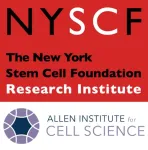(Press-News.org) A cellular link between obesity and atrial fibrillation — a heart condition that afflicts over 33 million people worldwide — presents a promising target for new therapies, researchers from the University of Illinois Chicago report.
Obesity is among the leading causes of atrial fibrillation, an irregular heart rhythm that can lead to heart failure and stroke. But scientists still don’t know how high levels of body fat cause this heart condition.
In a new study published in The Journal of Clinical Investigation, UIC researchers identified a cellular pathway essential to obesity-induced atrial fibrillation. Experiments in cells and mice found that blocking a key enzyme, called NOX2, in this pathway could both prevent and reverse changes in heart structure and function caused by a high-fat diet.
“A drug that blocks this enzyme may have two uses,” said Dr. Dawood Darbar, chief of cardiology and professor of medicine and pharmacology at UIC and senior author of the paper. “We could use this drug to prevent the development of atrial fibrillation in individuals who have obesity but who haven’t yet developed atrial fibrillation. For those who already have obesity and atrial fibrillation, we can use it to treat them and prevent the progression of the disease.”
The College of Medicine research team, led by UIC postdoctoral scholar Arvind Sridhar, looked at a process called oxidative stress that’s believed to link obesity and atrial fibrillation. Under oxidative stress — which can be caused by obesity, diabetes and other conditions — factors called reactive oxygen species accumulate in cells and cause damage.
Antioxidants, including vitamins and minerals found in fruits and vegetables, combat oxidative stress. But antioxidant treatments for atrial fibrillation have shown mixed results.
“Some of these studies were positive, some were negative, some were neutral, and we didn’t understand why,” Darbar said. “Now it seems the reason why antioxidants didn’t work in atrial fibrillation is because they didn’t target the specific pathway that caused the oxidative stress.”
The UIC team identified that pathway by examining heart tissue taken from patients during surgery. They found that the enzyme NOX2, which produces the damaging reactive oxygen species, was higher in obese patients compared to patients with a lower body mass index.
“As the BMI of the individual increased, we saw an increased severity of atrial fibrillation,” Sridhar said. “We also saw a similar increase in the expression of NOX2 as the BMI increased, which tells us that the two are intrinsically related.”
Next, they turned to a mouse model where the gene for NOX2 was removed. While normal mice that ate a high-fat diet developed atrial fibrillation, mice without the NOX2 gene did not. Normal mice treated with a drug that blocks NOX2 activity also did not develop the heart condition.
A third experiment used heart stem cells taken from atrial fibrillation patients using an innovative system developed by Darbar and Salman Khetani of the UIC College of Engineering. When they treated these cells with the NOX2 inhibitor, the level of reactive oxygen species dropped, and the abnormal electrical activity associated with atrial fibrillation was eliminated.
Because the drug used in the study’s cell and animal experiments is not FDA-approved, the researchers will search for and test other compounds that block NOX2 before beginning clinical trials in patients.
“Because obesity is becoming so common, I think this finding will have a tremendous impact,” Darbar said.
In addition to Darbar and Sridhar, UIC co-authors of the paper include Jaime DeSantiago, Hanna Chen, Mahmud Arif Pavel, Olivia Ly, Asia Owais, Miles Barney, Jordan Jousma, Sarath Babu Nukala, Dr. Khaled Abdelhady, Dr. Malek Massad, Lona Ernst Rizkallah, Sang Ging Ong and Dr. Jalees Rehman.
END
Breaking the link between obesity and atrial fibrillation with a new cellular target
2024-09-04
ELSE PRESS RELEASES FROM THIS DATE:
New research has potential to speed up forensic analysis in sexual assault cases
2024-09-04
A team of researchers has developed a radical new technique for analyzing evidence in sexual assault cases. The new approach could streamline the forensics pipeline and reduce delays in the processing of DNA evidence.
The research is described in a paper published today in the journal Advanced Science.
There are almost half a million sexual assaults in Canada every year with many more going unreported. The new approach could mitigate one of the reasons victims are reluctant to report assaults: the perception that ...
Banning friendships can backfire: moms who ‘meddle’ make bad behavior worse
2024-09-04
Delinquent activities almost always occur outside of the home and away from adult supervision, so it is only natural for parents to blame peers for their child’s bad behavior. Not surprisingly, many parents also assume that they can prevent future problems by limiting contact with suspicious peers.
However, a new study cautions parents – especially meddling moms – to resist the temptation to prohibit friendships because doing so only makes a bad situation worse. How can this be?
Results from a new longitudinal study of middle school youth, published in The Journal of Child Psychology and Psychiatry, indicates that maternal disapproval of friends in ...
AIM-HI Accelerator Fund announces the 2024 Women’s Venture Competition winners
2024-09-04
ROCKVILLE, MD (September 4, 2024) The AIM-HI Accelerator Fund is pleased to announce that the 2024 Women’s Venture Competition’s first prize winner with distinction goes to HDAX Therapeutics led by its CEO and Co-Founder, Nabanita Nawar, Ph.D, and the Second Prize Winner goes to ARMA BIO, led by Co-Founder & CSO, Paraskevi Giannakakou, Ph.D.
The 2024 AIM-HI Women’s Venture Competition Committee reviewed more than 50 applications from 10 countries, including Canada, Ghana, India, Israel, Norway, Romania, Singapore, Spain, Thailand, ...
Scientists use magnetic nanotech to safely rewarm frozen tissues for transplant
2024-09-04
Every day, people die waiting for an organ transplant. Time is at a premium, not just for those awaiting organs, but also for the organs themselves, which can deteriorate rapidly during transportation. Looking to extend the viability of human tissues, researchers report in ACS’ Nano Letters their efforts to facilitate completely freezing, rather than cooling and then thawing, potentially life-saving organs. They demonstrate a magnetic nanoparticle’s successful rewarming of animal tissues.
As of August 2024, more than 114,000 people are on the U.S. national transplant ...
Why dinosaur collagen might have staying power
2024-09-04
Dinosaurs continue to fascinate people, but that’s not their only enduring quality: Collagen in their skeletons remains intact for millions of years, despite containing chemical bonds that should only persist for about 500 years. Now, scientists report in ACS Central Science that the unique tenacity of this protein may result from a molecular structure that shields these vulnerable bonds from attack by water that’s present in the environment.
Collagen is the most abundant protein in animals. It’s found in skin and connective tissues, such as cartilage and bones. Fragments of collagen have been ...
Levels of one ‘forever chemical’ are increasing in groundwater, study finds
2024-09-04
Rain and water in ponds and lakes slowly seeps into the soil, moving through minute cracks to refill underground aquifers. Per- and polyfluoroalkyl substances (PFAS), often described as forever chemicals, can tag along into groundwater that’s later removed for drinking. Researchers in ACS’ Environmental Science & Technology Letters analyzed water from over 100 wells in Denmark for one particularly persistent PFAS: trifluoroacetate. They report steadily increasing levels of the forever chemical in recent decades.
Trifluoroacetate forms when fluorinated gases, such as refrigerants, and fluorinated pesticides partially degrade in the environment. Water passing ...
MIT chemists explain why dinosaur collagen may have survived for millions of years
2024-09-04
Collagen, a protein found in bones and connective tissue, has been found in dinosaur fossils as old as 195 million years. That far exceeds the normal half-life of the peptide bonds that hold proteins together, which is about 500 years.
A new study from MIT offers an explanation for how collagen can survive for so much longer than expected. The research team found that a special atomic-level interaction defends collagen from attack by water molecules. This barricade prevents water from breaking the peptide bonds through a process called hydrolysis.
“We ...
The state of dating report: How Gen Z is transforming sexuality and relationships
2024-09-04
Feeld, the dating app for the curious, in collaboration with Dr. Justin Lehmiller of The Kinsey Institute, has released a groundbreaking report, "The State of Dating: How Gen Z is Redefining Sexuality and Relationships." Released on World Sexual Health Day under the theme #PositiveRelationships, this report takes a deep dive into how Gen Z—shaped by global instability, digital immersion, and evolving cultural scripts—are shaping their approach to dating and sexuality.
After analyzing ...
Allen Institute for Cell Science and New York Stem Cell Foundation join forces to advance inclusive cellular biology
2024-09-04
Seattle, WA and New York, NY—September 4, 2024—Today, the Allen Institute for Cell Science and New York Stem Cell Foundation (NYSCF) announced a pioneering collaboration to address this critical issue, combining two cutting-edge technologies to create more inclusive cellular models for studying disease. This partnership will introduce the Allen Institute for Cell Science’s structure tags into NYSCF’s collection of ethnically diverse stem cell lines. The result: an unprecedented resource that will enable researchers to examine disease mechanisms and potential treatments across a ...
Photosynthesis in near darkness
2024-09-04
Photosynthesis can take place in nature even at extremely low light levels. This is the result of an international study that investigated the development of Arctic microalgae at the end of the polar night. The measurements were carried out as part of the MOSAiC expedition at 88° northern latitude and revealed that even this far north, microalgae can build up biomass through photosynthesis as early as the end of March. At this time, the sun is barely above the horizon, so that it is still almost completely dark in the microalgae's habitat under the snow and ice cover of the Arctic Ocean. The results of the study now published in the journal Nature Communications show that photosynthesis ...



